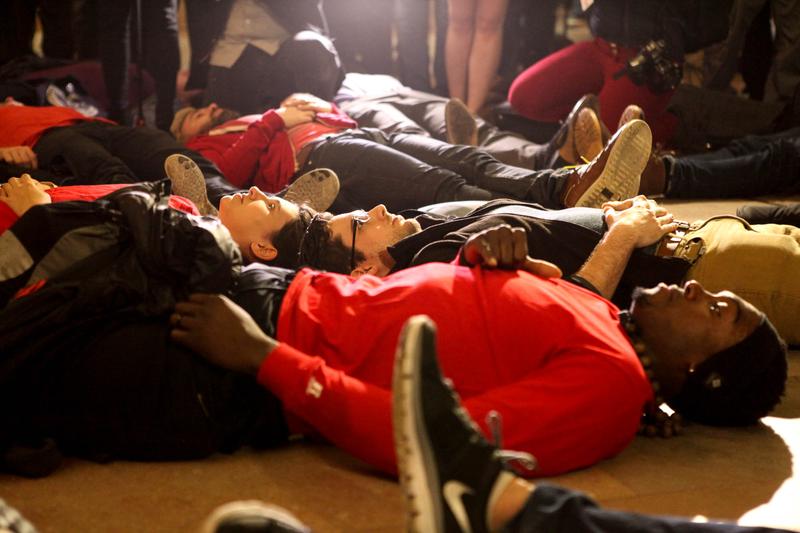
In this country, we have a long history of "citizen journalism" — non-professionals who spread news. This year, after Ferguson and Eric Garner and nationwide protests against policy brutality, citizen journalism achieved a new peak. Especially with photographs.
That's why photographs of the protests taken by ordinary citizens represent the best art of 2014, said art critic Deborah Solomon in this interview with WNYC's Soterios Johnson.
Solomon explained traditionally in protest photographs, we see people marching with their fists raised, representing resistance and opposition. Instead, this year's protesters lie on the ground in die-ins and identify with the victim. It's a whole new visual language for this kind of photograph, she said.
“It is a language of vulnerability and seems to say we are all potential victims,” she said.
Solomon also said even though some believe photography is not art, she thinks the word "art" is just a marketing term. "I don't believe in labeling visual images art or non-art. There are images that move us, that rouse us to action, and the best protest photographs belong to that category."
Solomon said the best images of the recent protests are on Twitter, marking a new moment for the social media website. “Twitter, thankfully, just shifted out of its goofy selfie phase in the U.S. to become an effective tool for political protest,” she said.
Do you think protest photography is art? Join the conversation or send us your own protest picture on Twitter using #protestphoto.
Protestors showed up to the holiday party and Penn president Dr. Guttman joined the die-in... Dope. pic.twitter.com/XC8g1hRd24
— Ricky Fontaine (@NotoriousGRC) December 10, 2014
Harvard Med Students Die In #ICantBreathe #BlackLivesMatter pic.twitter.com/KJZbcgi89M
— AshleyBSunshine (@AshleyBSunshine) December 9, 2014
Med School Die-in #BlackLivesMatter @WSU_Diversity @WSU_Med_School pic.twitter.com/BfTzONasOI
— De'Andrea Wiggins (@Dr_Wiggins) December 10, 2014
@shondarhimes @uwsmph joined 50+ medical schools in "die-in". Racism is a public health issue #whitecoats4blacklives pic.twitter.com/zyEhCj62Ii
— Kimberly Skipper (@kdskipper) December 10, 2014
#philly Med students at @PennMedicine stage #die in to highlight racial injustice in healthcare #phillydiein #phl pic.twitter.com/xKPZaEq7PE
— Randy Gyllenhaal (@RandyGyllenhaal) December 10, 2014
NYU die in. pic.twitter.com/1K2zCYlVP7
— John Surico (@JohnSurico) December 10, 2014
Clergy members stage die-in at City Hall, then rise, sing "We Shall Overcome" #EricGarner pic.twitter.com/fiyvtRglc8
— Emily Ngo (@epngo) December 8, 2014
